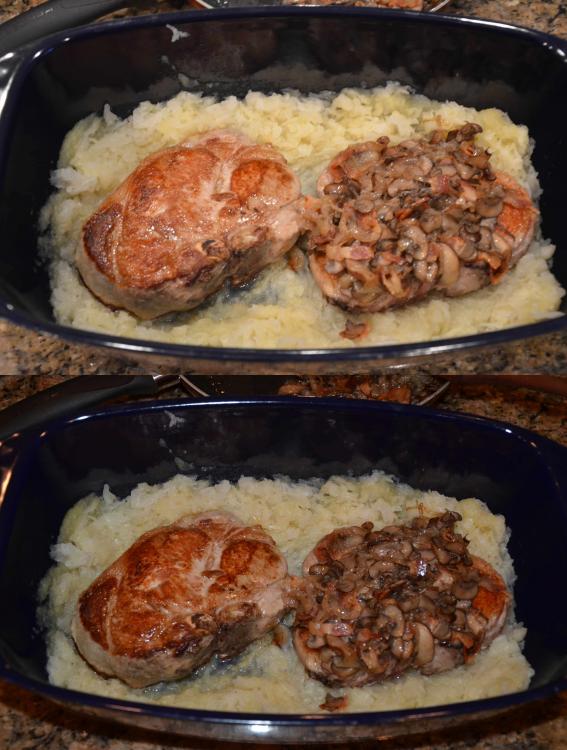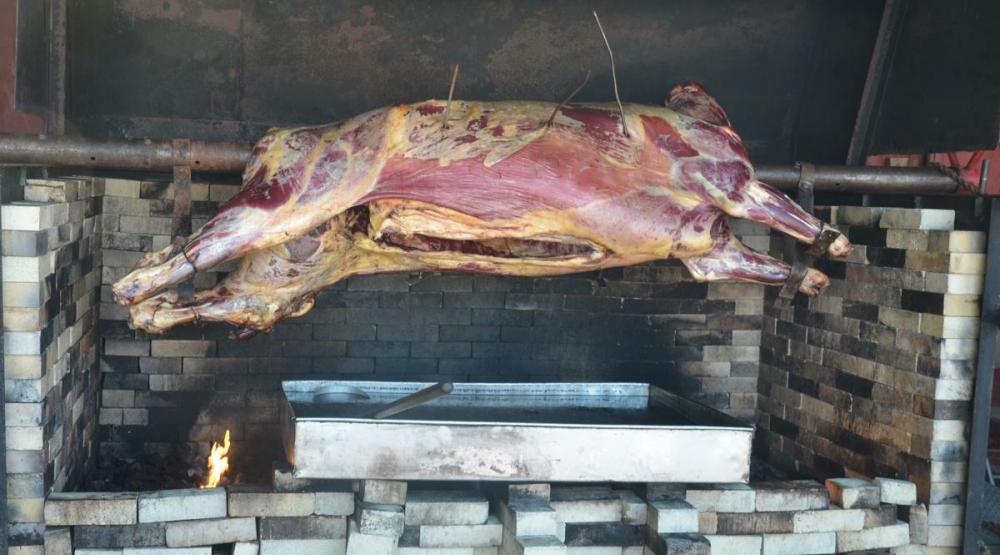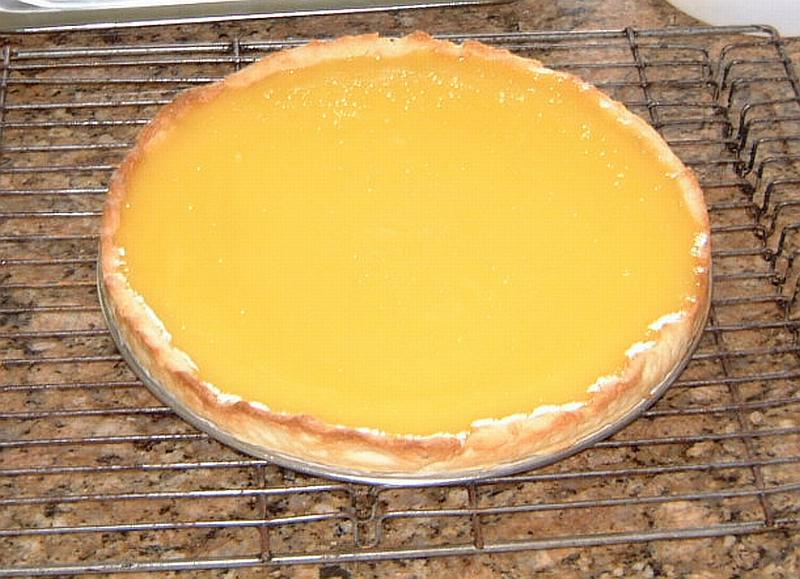-
Posts
1,652 -
Joined
-
Last visited
Content Type
Profiles
Forums
Store
Help Articles
Everything posted by AlaMoi
-

Revealed: seafood fraud happening on a vast global scale
AlaMoi replied to a topic in Kitchen Consumer
I've had 'the switch' in restaurants - serving a fish that _clearly_ was not the listed menu item.... if you buy fresh fish you'll easily learn to recognize mislabeled stuff - a lot depends on whether you have a fish monger with a wide selection to learn from. -
this is a very tasty combo - white bean salad with artichoke and asparagus for two with leftovers... I do my beans from scratch - so it's 150 g dry cannelloni = ~330 g soaked (alt: 14 ounces canned, drained) cooked & cooled prep: thinly slice 4-6 fresh radishes prep: 2 bunches scallion/green onions using both white solid stem green parts (10-14 pieces) prep: drain ~14 ounce wet/8-9 ounces dry / 340 g canned quartered artichokes, drained ~500 g asparagus - cut off tips; cut 15 mm pieces of tender stalk part. cook - 3 minute head start for stems into boiling water; add tips for additional 2 minutes chill shock in ice water to stop the cooking. put everything except beans in bowl salt & pepper to taste refrigerate 90 minutes add beans in, drizzle with juice of 1 fresh lemon - no seeds drizzle with good extra virgin olive oil toss, check for seasoning, refrigerate 1 hour prior to service garnish with chiffonade of fresh basil.
-
Bock beers have the alcohol to do a rapid wasting . . . (g)
-
dinner, some assembly required . . . this is a USDA prime grade beef tenderloin from Costco ~350g/12 ounces - for two
-
this AM it was banana pancakes / flapjacks . . . cut a banana into about 1/8" thick / 3 mm slices - you'll need four per pancake, see pix - I need to count more carefully.... normal batter pour then plunk banana slices in un-set batter - timing is everything, I only pour three pancakes at a time and immediately add slices. flip as usual. got tired of blueberries . . .
-
as soon as Spam started the current crop of tv advertising, about 10 lineal feet of supermarket shelf went bare. not a single can of any Spam/product/variety to be seen.... anyone else notice this?
-
pssst: it's not the camera . . . I used a Canon F1 for my many of my film years. almost any (of current crop) digital cameras will beat the socks off any ISO film speed - i.e. low light performance. but low light or bright light - the light source (incandescent/florescence/LED 1 to 5K/etc etc etc) drastically affects color rendition as captured by the camera. it is necessary to understand the light source issue - as it can be used to great advantage for "mood" shots. the other lighting issue is 'distribution' and 'diffusion' - i.e. shadows, etc
-
I think most home-non-pro-off-the-spatula pix can be 'improved' by simply taking a second to look at what all 'else' is in frame and the general staging. example: was taking a pix of the holiday table - with an iPhone - looked at the pix and right there big and ugly on the left side . . . . the kitchen trash can. so I 're-framed' the shot. I try to take that pause for any of the plated shots, etc. it can make a big difference if you take 10 seconds to wipe off the gravy drip. . . here's another, a two-fer - (1) careless staging and (2) lighting differences
-
our market has been turning up some less than usual produce of late. I'd ask, but I'm sure they'll have the standard "oh it's the covid virus" patterpitter. my observation is our Giant has management failings, as other Giant stores in the area, along with Weis and Wegman have very well stocked shelves and much better looking produce. bought some reds, they are quite yellow inside ... this documents some of it: https://www.leaf.tv/articles/types-of-red-potatoes/
-
-

Combustion Inc Wireless thermometer probe by Chris Young
AlaMoi replied to a topic in Kitchen Consumer
there are several thousand existing variants of "wireless oven/smoker thermometers" so the 'fund me in advance' is aahhh, seriously,,,, like "can we talk?" questionable. vapor variety software promising to measure / predict t,u,w,x,y,z,,,,, thanks, but I'll wait. how do electronics survive oven temps? - well, that's another question. what happens when the battery dies mid use? - well, that's another question. does it have a battery indicator: "Your battery will die before the roast is finished." - well, that's another question. if one sets the alarm for 135'F, how does the device know you're using a 60 watt light bulb and it will take 20 hours to reach that temp vs a 550'F broil oven and it'll take 20 minutes to reach that temp, hence the battery life is "good" -
try https://www.alibris.com/booksearch?mtype=B&keyword=Madhur+Jaffrey&hs.x=18&hs.y=18
-
we were in a restaurant . . . ordered a Caesar salad. mentioned to the waiter - gosh, no anchovy . . . that _defines_ a Caesar salad.... to which he replied: 'oh, terrible sorry. the kitchen will add anchovy on request, but so many people dislike anchovy we don't normally put it in....' so why in the h dot e double toothpicks do they order an Caesar salad?
-
-
regrets to say, , , , if any of the "brand names" produces something really reliable and especially "good" - it's sheer accident. the "brands" farm out the engineering and construction to Asian/Chinese sources based on "we need an oven than cannot cost more than $X/YEuro/whatever. their costs, of course, do not resemble the "retail" cost at the consumer level.
-
nice loaf. for ears I've found a scissor snip to be exceedingly effective.
-
I want to make some nice New England clam chowder. I've tried many many recipes - from books / on-line - none have ever impressed. good, yes. stellar . . . no any tried&true recipes?
-
lots of good points. I think the most 'best' approach is simply the "use less" idea. one crust done very thin.... I am going to try reducing the fat, though. just wondered if anyone had already tried it. btw, I've done an almond crust for a lemon tart - veddy tasty:
-
well, 3:2:1....52 g in cups, 3 cups flour+2 cups butter+1 cup water. KA AP flour they list as 120g butter comes in a 8 ounces/cup = 226g so - 360 g flour 452 g butter ~250 g water I've never ever used 1 cup of water = 70% hydration - for a pie crust. so something is seriously misunderstood here. for top&bottom i.e. two crusts - my classic is 3 c flour + 2 sticks/8 ounces butter = water as needed - which is done in tablespoons, not cups. it's half the butter of the 3:2:1 ratio. I have indeed considered simply rolling the pie dough thin thin thin and using 50% - ie one crust amount for both top & bottom. the other option I'm leaning toward is: no bottom crust, just a top crust. using water/vodka/pixie milk.... I'm open to any ideas.... I'm also willing to sacrifice the pretty browning for a functional good tasting crust. I suspect a zero fat crust could be 'brushed' with melted butter and 'look the same'
-
I've found the most convenient/quickest/dirtiest way to organize the (chest) freezer is mid-sized topless/flapless corrugated boxes. on for beef, one for chicken, one for fish, one for pork. oh, and one for homespun stewed tomato pizza topping qt bags.... now... I keep large unopened "stocked" frozen veggies in the chest freezer, but they move from chest freezer to refrigerator freezer when opened and 'in use' curiously our Costco runs focus on stocking up on prime grade meats - typically rib-eye and tenderloin - plus steelhead trout - which nobody carries locally. I'm moving to Berkshire pork from a independent supplier, but previously we've found Costco pork chops (frozen, thawed, brined) quite delicious. one can make the argument that freezing prime is a mortal sin. however comma frankly the prime tends to a degree of tender than freezing has really minimal impact on texture or taste. ymmv. local supermarkets rarely have prime on the shelf - and if...it's super super super expensive. Costco prime is priced in line with Giant Choice. some other things - frozen shrimp, scallops. but note: Aldi often has dry pack frozen scallop mega-size at fantastic prices. do you have a store you shop at for one single item?.... and mineral water. Costco has half liter Pellegrino 24 count for +/- the Giant 12 count price, so a single 24 count block pays for the 60 miles round trip. I buy three at a clip....
-
anyone tried reducing the fat content of pie crust to a minimum? (it's the LDL thing....) the typical old school recipes use one stick of butter (4oz) per crust.... I've reduced the butter in - for example - drop biscuits from 6 T to 3 T - the only effect noted is less butter dripping off the sheet and smoking up the house when it burns on the oven floor.... taste/texture seems to be unchanged at 50% we enjoy homemade pot pies of every sort - so I've been looking for a way to avoid two full stick = 1/2 pound of fat/butter in a double crusted pot pie.....
-

Physicists Investigate Food Sticking to Middle of Non-Stick Pans
AlaMoi replied to a topic in Food Media & Arts
heated oil / fat in a pan, any pan, will "crawl" into a pattern, the pattern varies quite wildly by gas/electric/induction/quartz light/etc. the pattern makes itself more/less evident with the depth of oil/fat in the pan. deep = no pattern the basic reason is: liquids gather together - aka coalesce - based on their surface tension, which varies by temperature. on a gas top with fingers/grates to support the pan, you get a pattern resembling the grate. coiled electric elements - you get a spiral == coil pattern induction leaves the middle dry as the edges heat more..... -
soft doughs in "pans" always rise fast/quicker/more around the edges. makes common sense - that's where the heat is..... is is also not at all uncommon for doughs to "rise up then sink" as they finish cooking / and or cool. except that around the edges, doughs may stick to the walls. an issue noted in souffles, for example - butter/sugar the wall of the pan/pot so the souffle can more easily "climb" . . . multiple xxxxx-berry buckles and xxxx-fruit cobblers exhibit that behavior. if I don't turn back the oven temp when the edges are set to a 'pretty& browned' stage - the middle eventually gets done but the edges wind up burnt/dry/crispy/un-nice..... the mini-craters on the bottom is likely due to water content in butter in / near directly in contact with the baking surface aka pan/sheet/stone.... the water "explodes" when turning to steam and makes a hole....







